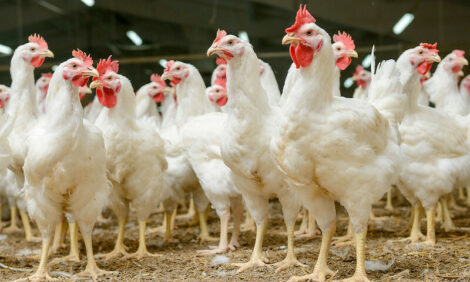



CME: Feed, Residual Use Projected to Rise in 2013/14
US - At a time when livestock futures have been testing all time record highs, grain futures have been mounting an impressive rally of their own, write Steve Meyer and Len Steiner.Summer corn futures are currently at $5/bushel, 16 per cent higher than the bottom in early January. Summer soybean futures last closed at $14.27/bushel and nearby prices are above $14.5, 14 per cent higher than January levels. USDA updated its monthly projections of US grain supply and use for the current marketing year at noon EST, Monday, 10 March. The table below presents the standard corn supply/demand table with actual numbers for the past two years and the estimates that USDA presented in February.

The March analyst estimates for corn yields and corn ending stocks are highlighted in red and they come from a Dow Jones survey of about 20 analysts. On average, analysts polled expected USDA to peg ending stocks for 2013/14 marketing year at 1.487 billion bushels, only slightly higher than the estimates presented in the February report.
At this point, futures appear to be focusing more on the pace of weekly shipments, which has accelerated in the last few weeks and currently implies higher exports than USDA’s 1.6 billion bushels. Of the 20 analysts polled by Dow Jones, only three analysts expect the ending stocks number to be above 1.5 billion bushels, an indicator of the fact that analysts recognise USDA normally does not make any big changes to its estimates in the March report. Indeed, we will likely see more significant revisions once we get the data from the quarterly grain stocks survey.
The big question mark in our minds is what happens with the feed and residual number given projections of large reductions in hog supplies this spring and summer. USDA is projecting feed and residual use in 2013/14 to increase by 22 per cent compared to the previous year. Are livestock, particularly hog futures wrong about the potential losses in the sector? Is the USDA feed use too high? That’s a difficult question and one to which we will not know the answer until this summer.
So far, feed consumption has been quite strong and has supported the USDA forecast. Despite much speculation last fall, hog numbers have not declined as much as feared (note the correction in hog futures for 13 December and 14 February) and producers have continued to increase feed use to make up for any losses.
Hog carcass weights have been running about three per cent above year ago levels since November. The removal of Zilmax as a feed additive also may have encouraged producers to increase input use in order to maintain cattle weights. Other than slight adjustments, it is unlikely USDA will change the feed use number in the March report.
In the February Outlook meetings, USDA presented a forecast for 92 million acres to be planted with corn. Using a trend yield of 165.3 bushels per acre, USDA projected a significant expansion in corn supplies next year. The recent rally in corn futures is a) looking to keep some of the acres in corn given the rally in competing products and b) discounting some of the more aggressive yield estimates.
Concerns about spring planting progress are increasing and there are mounting questions that summer weather may challenge the robust yields projected by trend models. Weather concerns will likely continue to impact the market until the crop is in the ground and there is more evidence to suggest the return of El Nino weather patterns.









